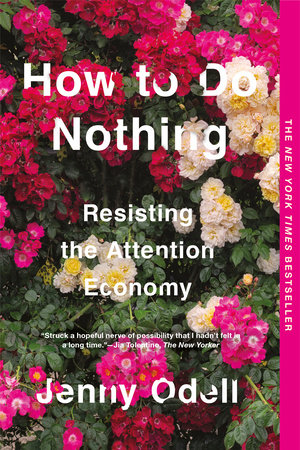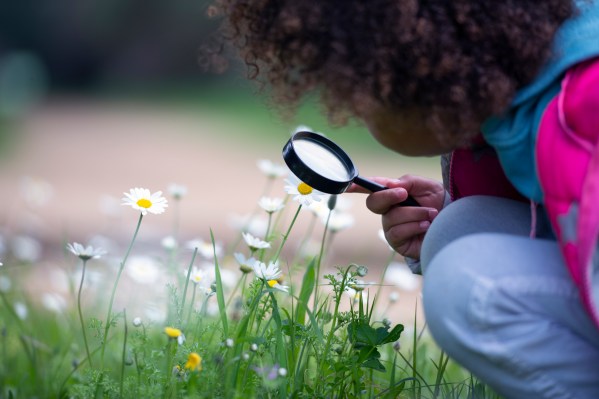When it comes to climate change, it might seem that a book entitled “How to Do Nothing” would not only be irrelevant, but also downright obscene and even dangerous. Not to mention that after more than a year of pandemic living, many people are understandably fatigued at the prospect of continuing to keep their lives empty of social activities.
Yet, messing with our notions of action and contemplation is precisely the plan that Jenny Odell has laid out in her lapidary work, a meditation that is, ironically, a call to action.
Odell is a Bay Area star, who has been an artist in residence at a variety of institutions from the Internet Archive to Recology, San Francisco’s trash pickup and processing company. Her artistic work centers on attention, of focusing on the details that envelop us in this world and what we can learn from them. It’s an activity that leads her to birdwatching and long walks in Oakland’s public parks such as the Morcom Rose Garden.
Her book, it might be helpful to note, is subtitled “Resisting the Attention Economy” and Odell has made it her mission to help wean a generation, and well, a population off the spasmodic negativity that emanates from our social media platforms. In fact, she has a more ambitious goal: to wean people off the notion that productivity is the only value to life — that action is the only useful metric by which to measure ourselves. She wants to direct our attention to more important things.

“I fully understand where a life of sustained attention leads. In short, it leads to awareness,” she writes in the introduction. The key word here is sustained — and that’s also the connection with sustainability and the climate more broadly.
We don’t lack for information, data or opinions. In fact, we are overwhelmed with the dross of human thought. Some studies have shown that modern knowledge workers read more words per day than ever before in history — but they’re reading social media posts, emails, Slack messages and other ephemera that are each nibbling and collectively devouring our attention. What’s left is, for many of us, not much of any thought at all. The world is more frenetic and chaotic than ever before, but in the process, we have traded a deeper understanding of ourselves and our place in this world for an incessant deluge of media. Odell wants us to take that imbalance and level it.
For her, that means practicing a more sustained form of attention. That’s a skill most of us have little practice with (a deficit we may not even be aware of, ironically), and indeed, sustaining attention might even mean regularly refusing to engage with the world around us. That’s a good thing in her analysis. “At their loftiest, such refusals can signify the individual capacity for self-directed action against the abiding flow; at the very least, they interrupt the monotony of the everyday.”
Controlling our attention, directing it, and filtering out the noise of contemporary life results not in further atomization and narcissism, but rather a more collective sense of being. “When the pattern of your attention has changed, you render your reality differently. You begin to move and act in a different kind of world,” she writes. Suddenly, the trees and flowers that were once backdrops to our walks to brunch become complex and elegant life in their own right. We deepen our camaraderie with our friends and colleagues in ways that we never could with an emoji in Slack. We build up the potential to work together to solve problems.
Climate Change Books Summer 2021
Our sustained attention also allows us to notice the details of what is changing around us, the subtle variations of our environment that come from a warming planet. “Things like the American obsession with individualism, customized filter bubbles, and personal branding—anything that insists on atomized, competing individuals striving in parallel, never touching—does the same violence to human society as a dam does to a watershed.” We can’t fix what we don’t see, and with our fragmented attention, we really don’t see much.
The irony of course is that while technology products dissolve attention — building them takes an extraordinary amount of it. While some startup founders strike it rich on a whim and others are injected with product ideas from friends or VCs, the vast majority learned to sustain their attention on a market or customer for sometimes extraordinarily long periods of time in order to notice the gaps in a market. A founder recently told me that he had been working with customers in his market for more than a decade before he eventually understood a need that wasn’t being fulfilled with existing solutions.
What’s missing in the tech and startup community today is connecting that user empathy and focus on product-market fit to the attention we need in all the other aspects of our lives today. Odell analyzes it a bit more negatively than I would: we actually have these skills and in fact, use them quite specifically. We just don’t use them broadly enough to bring our minds to look at our friendships, communities and planet in a deeper light.
Doing nothing allows us to see what matters and what doesn’t. When it comes to solving big problems, particularly some of the most intractable like climate change, it’s precisely doing nothing that allows us to see the right path to doing something.
How to Do Nothing: Resisting the Attention Economy by Jenny Odell
Melville House, 2019, 256 pages
